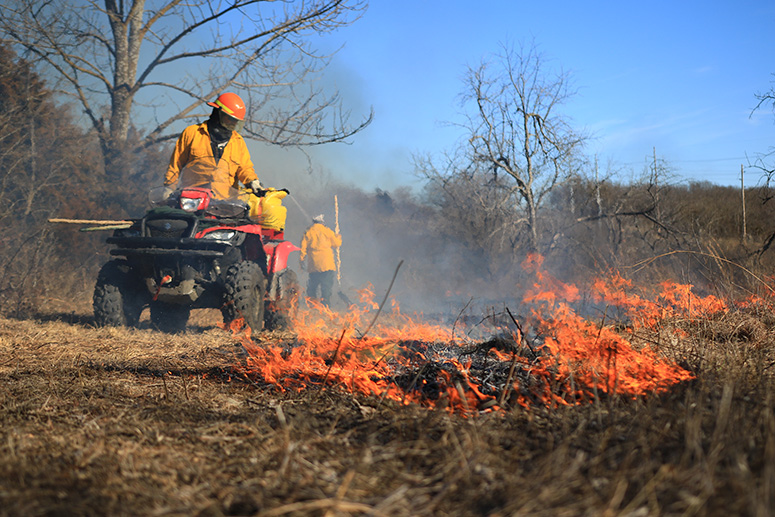
The rich flora of North America, with its expansive grasslands, hosted an 8,000-year-old ecosystem that existed with the help of one vital element- fire. Sometimes by nature and perhaps more often by the indigenous people that lived here, fire kept the grasslands open and thriving.

Fire is an essential component in native habitat management, but perhaps most important in prairie habitat maintenance for many reasons. Without burning every 1 to 3 years, grasslands will yield to the shrubs and trees that move in, turning it from prairie to woodland. Burning also eliminates thatch from the prior year(s) growth enabling light to reach the surface to coax up tender, new growth or seed germination. The dead foliage is reduced to ash during a burn, providing important nutrients in a compact, readily available form that can be more easily used by plants than the slow process of breaking down through decomposition. Lastly, burning can help control invasive species that may overrun an area that is not managed with properly timed burns.
Prairie plants have 80% of their biomass below ground. This allows them to withstand fire as the root system can reach over 10 to 15 feet below ground on many species of native plants. The deep root system also allows natives to deliver important ecosystem services such as reducing runoff from storms, sequestering carbon and filtering water and air.
Jackson County, Missouri was once 45% prairie. In the county today all that remains of the ecosystem that once covered the plains and almost half of Jackson county is in Jerry Smith Park. Much of Jerry Smith Park is a diverse, never plowed prairie that we refer to as a remnant. Many plants will only grow on unplowed ground. Science is just now cracking the mystery of the special microbes that exist in undisturbed soil and support this special plant community.
Jerry Smith Park and other remnant sites and restorations in the Kansas City Parks Department are routinely burned as an important part of their management. Without fire, these remnants and plantings would not only fail in diversity but most likely be overtaken by trees and shrubs or invasive plants.

Burning requires a narrow set of parameters for humidity, wind, temperature and the moisture level of the soil and plants in the burn area. Burning also requires knowledgeable fire bosses and a trained group of staff or volunteers to keep everything going as planned.
During burns passersby or neighbors may comment on the smoke or road closures. With the elimination of fire from the ecosystem of the plains we have also lost widespread understanding of the important role fire plays. Fire is what keeps the native habitat in our parks, city and planet healthy and insures that we pass on some of our ecological inheritance to future generations.
article by Mary Nemecek. Photos by Frank Varon, Matt Garrett, and Linda Williams







